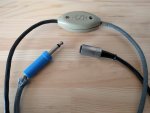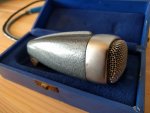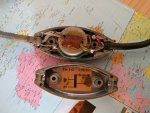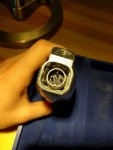Good day everybody!
My grandfather gave me his old Sennheiser MD 21 microphone (he bought it in the late 1960s). I tested it, but it appears to be broken. The cable is broken, I think. My grandfather already had this problem and tried to fix the cable. It looks like somekind of Frankenstein cable, with a logic board in the middle. I searched the internet but I couldn't really found a good answer. The only thing I know, is that the logic board is for switching from balanced to unbalanced output / balanced to balanced output.

My question: Is the microphone going to work with a brand new, of the shelf cable? Or do I have to resolder cables to the logic board?


Thanks in advance!
PS: Sorry if I sound like a noob. I don't really know much about microphones.
My grandfather gave me his old Sennheiser MD 21 microphone (he bought it in the late 1960s). I tested it, but it appears to be broken. The cable is broken, I think. My grandfather already had this problem and tried to fix the cable. It looks like somekind of Frankenstein cable, with a logic board in the middle. I searched the internet but I couldn't really found a good answer. The only thing I know, is that the logic board is for switching from balanced to unbalanced output / balanced to balanced output.

My question: Is the microphone going to work with a brand new, of the shelf cable? Or do I have to resolder cables to the logic board?


Thanks in advance!

PS: Sorry if I sound like a noob. I don't really know much about microphones.




